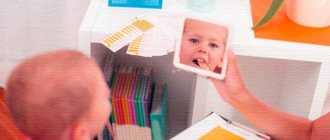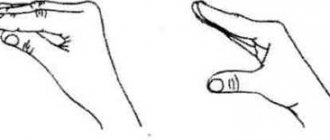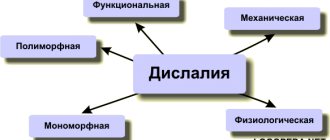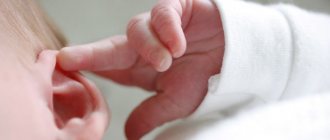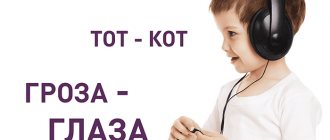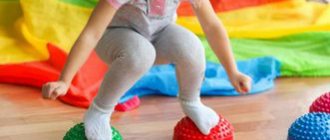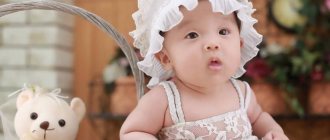How to evaluate the result
Again, it is very important to record each step in a speech therapy album to examine sound pronunciation. And even more so, when parents check speech or simply play with a child and realize that a syllable or word is reproduced poorly, this needs to be recorded. If a defect has been discovered, that is, the baby does not succeed in everything or something, then it is necessary to make an entry in the album to examine sound pronunciation.
It happens that a child completely lacks a sound, for example, “uk” instead of “bow” or “eka” instead of “river”, or the letter is replaced by a simpler one, for example, instead of “ball” he says “sarik”. And if we are talking about the fact that the child is under 4–5 years old, then in fact such a defect may be a simple age-related tongue-tiedness, that is, a feature due to the fact that the baby is not yet physiologically able to pronounce the sound correctly. There is a high probability that the problem will resolve itself when the child grows a little and develops his articular muscles. It is worth remembering that each sound must become at a certain age, when the speech apparatus and hearing mature.
But still, ideally, parents should simultaneously create favorable conditions. It is necessary to conduct games and various training sessions for the development of hearing, articulatory gymnastics, and so on. This is necessary so that the sound appears on time and no problems arise.
Sometimes it can happen that even when the mother plays various games, the child’s sound does not get into the right place and it is necessary to contact a specialist. But if adults have prepared a certain base, and the baby already knows many tasks for examining sound pronunciation, it will be easier for the speech therapist, since speech hearing is developed and the apparatus is strengthened.
The mistake of many is that parents wait for a certain age. This is wrong, as soon as the child begins to understand what is being said to him and learns to repeat after his parents, educational games can be played 1-2 times a week.
If such deviations are observed in a child after 4–5 years, then the delay indicates that there is some reason that prevents the child from learning a particular sound. And this is a true disorder, and in difficult situations it can even be a problem of a neurological nature, when the connection between the organs of articulation and the central nervous system is disrupted. In such a situation, each training session should be carried out only under the guidance of a specialist.
What to pay attention to
When assessing auditory attention, parents should keep a sound pronunciation test protocol. This can be done in any notebook or notepad. This action is necessary not only to try to remember and forget over time, but to have accurate information about all errors in the perception of what was heard.
Perhaps the child incorrectly indicates which instrument sounded, or did not recognize the direction of the bell. All this must be recorded in the pronunciation examination protocol. Firstly, this will make it easier for the adults themselves; they will understand what to pay attention to. And secondly, if you need to contact specialists, the notebook will be an excellent assistant for correcting the situation.
Toy location
In addition to the fact that the child must determine what object sounded, it is very important that he knows where the sound comes from. And here you can invite the baby to turn away, ringing the bell behind him from below, above, right, left, that is, in different positions. And he must point with his finger or say where he hears the sound from.
An important point in the method of examining sound pronunciation is closing the child’s eyes. Before doing this, you must definitely ask his permission. There are different options for reproducing this action: firstly, one of the adults can close their eyes with their own hands, and secondly, you can tie it with a small scarf. But in any case, the child should not be afraid and protest, and to do this, you first need to ask about his desires.
The important idea of this point is that the method of examining sound pronunciation involves testing auditory understanding. If the child is not yet confident enough in performing these tasks, does not understand what is required of him, or makes mistakes, then it is important for adults to not check and forget once, but to conduct regular training.
Know age norms
Knowledge will help you not to panic ahead of time. That is, there are age periods when certain sounds are simply physiologically quite difficult for a child. He is unable to pronounce them. When parents know this, they stop panicking because they understand that it is just an age factor.
And vice versa, if adults understand that the sound should have appeared according to the norms, but the child does not have it or replaces it with another one in speech. Then parents understand that there is no need to waste time, but to do something as soon as possible, get a consultation, undergo a sound pronunciation examination and begin to help the child in a playful way so that the sound finally appears and fits correctly.
Therefore, knowing age norms is very, very important.
The second point is to develop speech and non-speech hearing
Why is this necessary? In order for a child to correctly pronounce certain sounds, he must first hear them correctly. That is, he must have normal physiological hearing, he must correctly perceive both non-speech and speech sounds. And there is also a nuance here. Even if a child has naturally good, acute physiological hearing, this does not guarantee that everything will be all right. This happens because it is so inherent in nature. The pronunciation of sounds is initially imperfect and you need to help the child develop them and pronounce them correctly. And this is within the power of every parent.
Non-speech sounds are all the sounds of the surrounding world except speech itself. For example, this is the roar of the wind, the crackling of snow, raindrops, and so on.
Speech hearing is the ability to distinguish where one word ends and another begins, to determine tempo, intonation, that is, all the subtleties of speech. To further understand the topic, you can read Konovalenko’s works “Survey of Sound Pronunciation.”
Can pronounce correctly, but mixes up sounds
If a child speaks like a hat, then a sapka, or, depending on the position in the word, uses the wrong letters, then the reason may be precisely that it is difficult for him to distinguish the text by ear. This means that he does not catch the difference in some combinations; for him, for example, S-Z or R-L, sound the same. And here, of course, it is very important to develop phonetic hearing, and in fact, this option should in no case be left to chance. Like the previous problems in principle, but this defect is especially special because it can later result in problems with reading and writing. In case of such a violation, it is necessary to conduct an examination by specialists as early as possible in order to begin to correct everything in a playful way. It would also be a good idea to visit a speech therapist.
Attention check
Before parents begin directly to those games, topics and exercises that are needed for correct sound production, it is necessary to evaluate their hearing. Therefore, it all starts with a qualitative check of the child’s attention.
This can be done in several ways. Ideally, do them all. Not at one time, of course, not in one day, but still try to complete the exercises. The most important thing is for both parents and child to tune in. It is important that the baby wants to play so that he is in a good mood. Once again, it is worth noting that it is absolutely not necessary to do everything at once and in one day.
The most important thing is that it is fun for the child and does not depress the parents themselves.
Sounding toys should be placed near the child.
The essence of the exercise is that you need to close the child’s eyes or ask him to turn away, in general, do what makes him comfortable. And after that, you need to take material for examining sound pronunciation, in this case it’s a toy, and start sounding it. Then the baby turns, looks at all his treasures and shows the instrument the adult played.
Naturally, you shouldn’t take completely new toys to play. The child should already know what the objects used sound like. If this point is not fulfilled, then first you need to play with the baby so that he learns and remembers what this or that toy sounds like. In this case, you need to pay the child’s attention to every sound.
Worry, panic ahead of time
For example, when a child is 1.5-2.5 years old and he cannot pronounce certain sounds, he should consult a doctor. Especially if this applies to difficult consonances Ш, Л, Р. And with such a problem, parents immediately run to a sound pronunciation examination. But these sounds are complex, and a young child is simply not able to pronounce them correctly due to his age. That is why he can either skip them or replace them with simpler letters that he can speak correctly.
Also, up to a certain age, this is also a physiological feature, let’s say, a conditional norm. This topic is covered in the most detail in Konovalenko’s book “Express examination of sound pronunciation.”
Articulation gymnastics
Up to four years of age, it is recommended to do such training at least several times a day, that is, it is not necessary, but it is desirable. You can use at least the simplest exercises; it is not necessary to immediately take on the entire complex of articulatory gymnastics.
You can start doing it from the age of one, and sometimes earlier. For example, you can use the following exercises: invite the child to make a face, show his tongue and hide it, puff out his cheeks and retract them, make his lips a bow, and much more. All these tasks are quite accessible to the child and help strengthen his speech muscles: lips, cheeks and tongue. This complex helps the baby pronounce certain sounds. In adulthood, if you do such gymnastics, it will be easier for him to position these organs correctly.
And with these three points, including knowledge of norms, development of skills and gymnastics, parents help the child when he still physiologically does not say anything. Adults create favorable conditions for the correct production of sounds.
Distorted pronunciation
Throat sounds R are when the baby vibrates not with the tip of the tongue, but with the palate, that is, the result is a more French manner, or when the child, when pronouncing hissing and whistling sounds, sticks his tongue between the teeth - all this can no longer be called age-related tongue-tiedness.
In this case, at 4-4.5 years it is necessary to contact a speech therapist, because such defects cannot be corrected on their own. Here you should not expect the sound to come on its own. The longer you wait, the stronger this defect becomes fixed and then it becomes more difficult to correct the situation.
